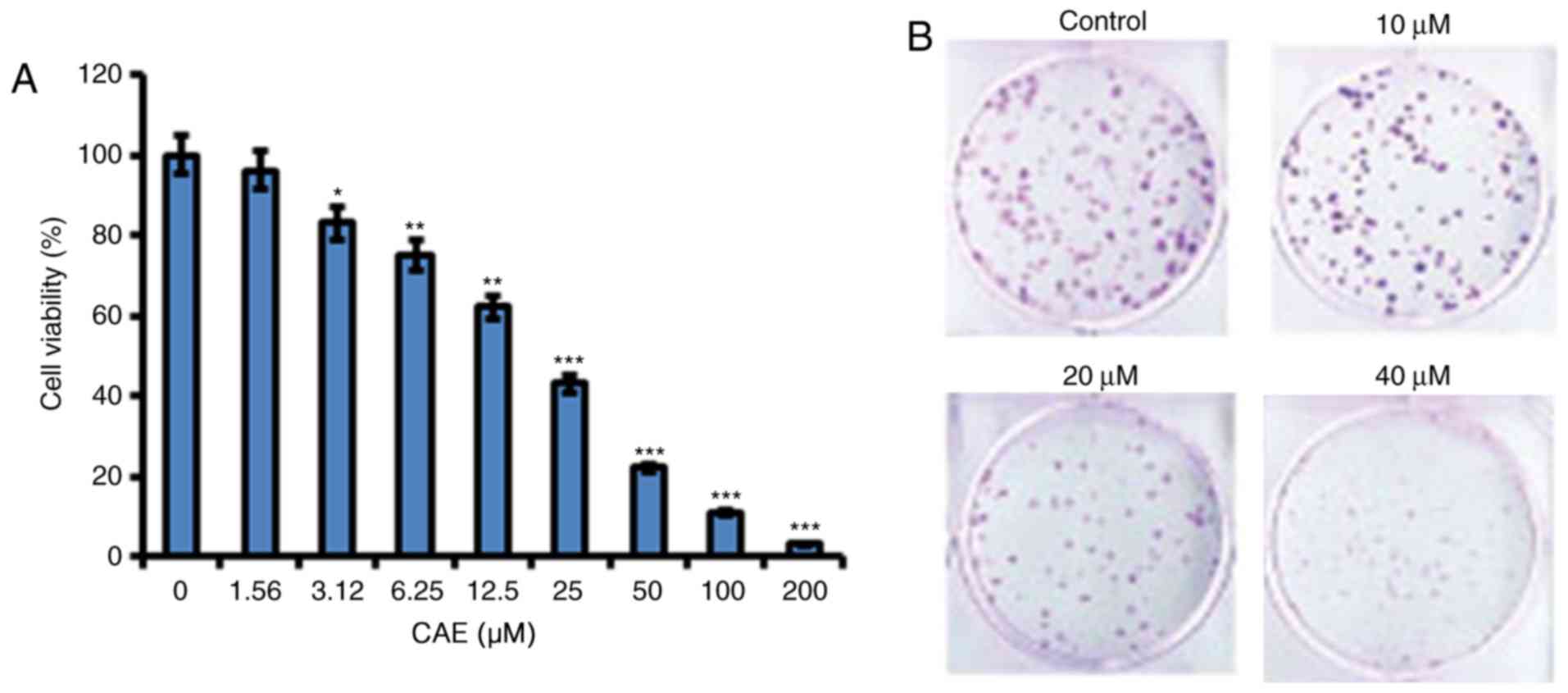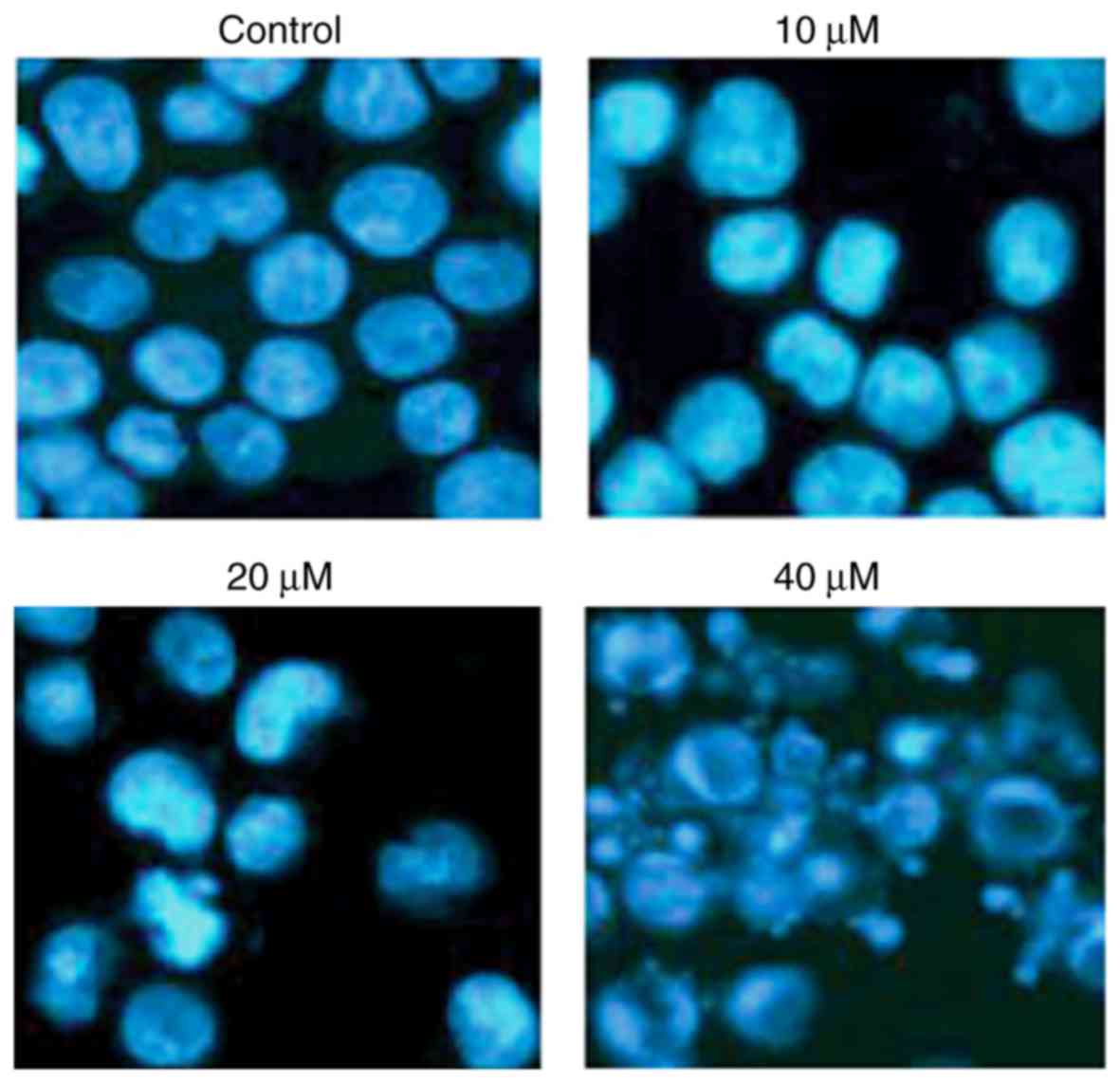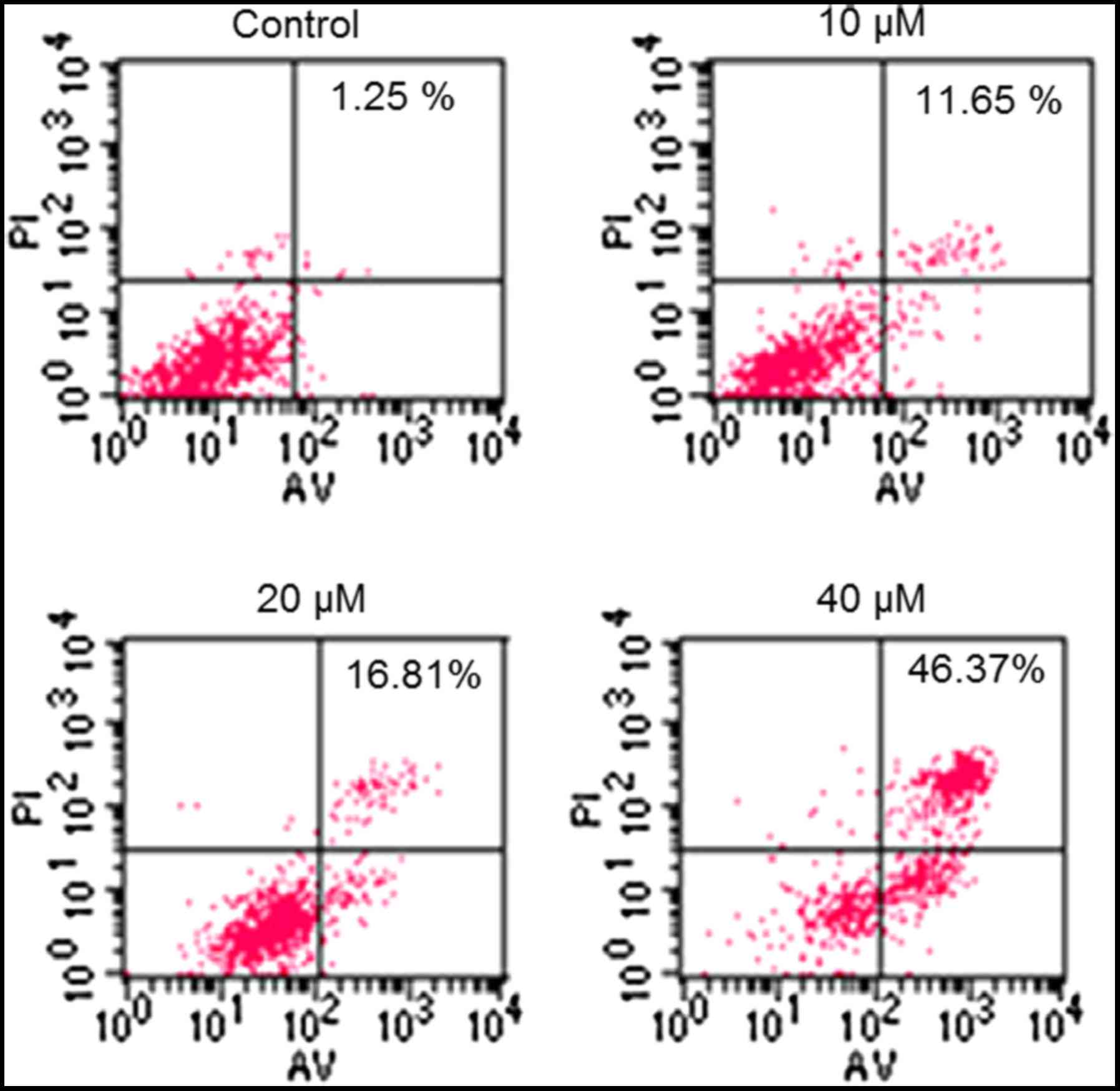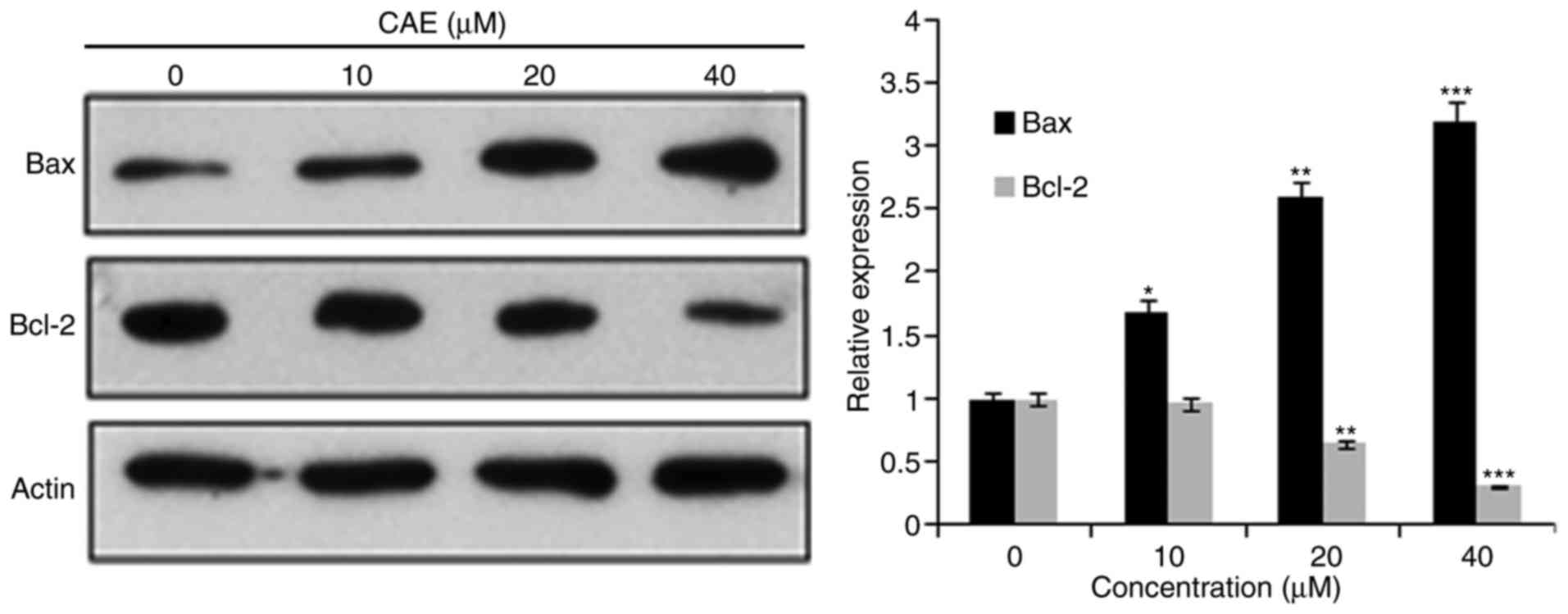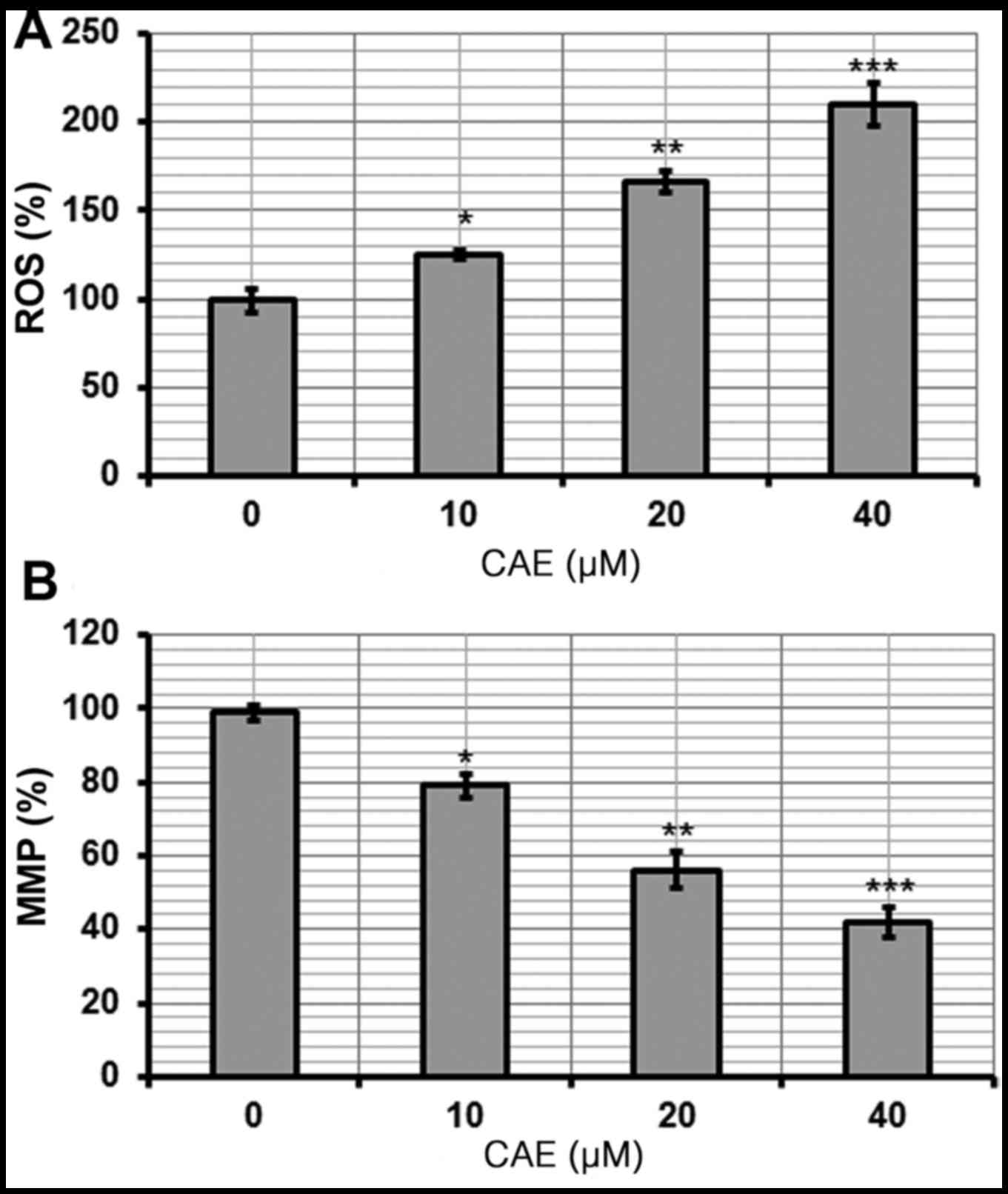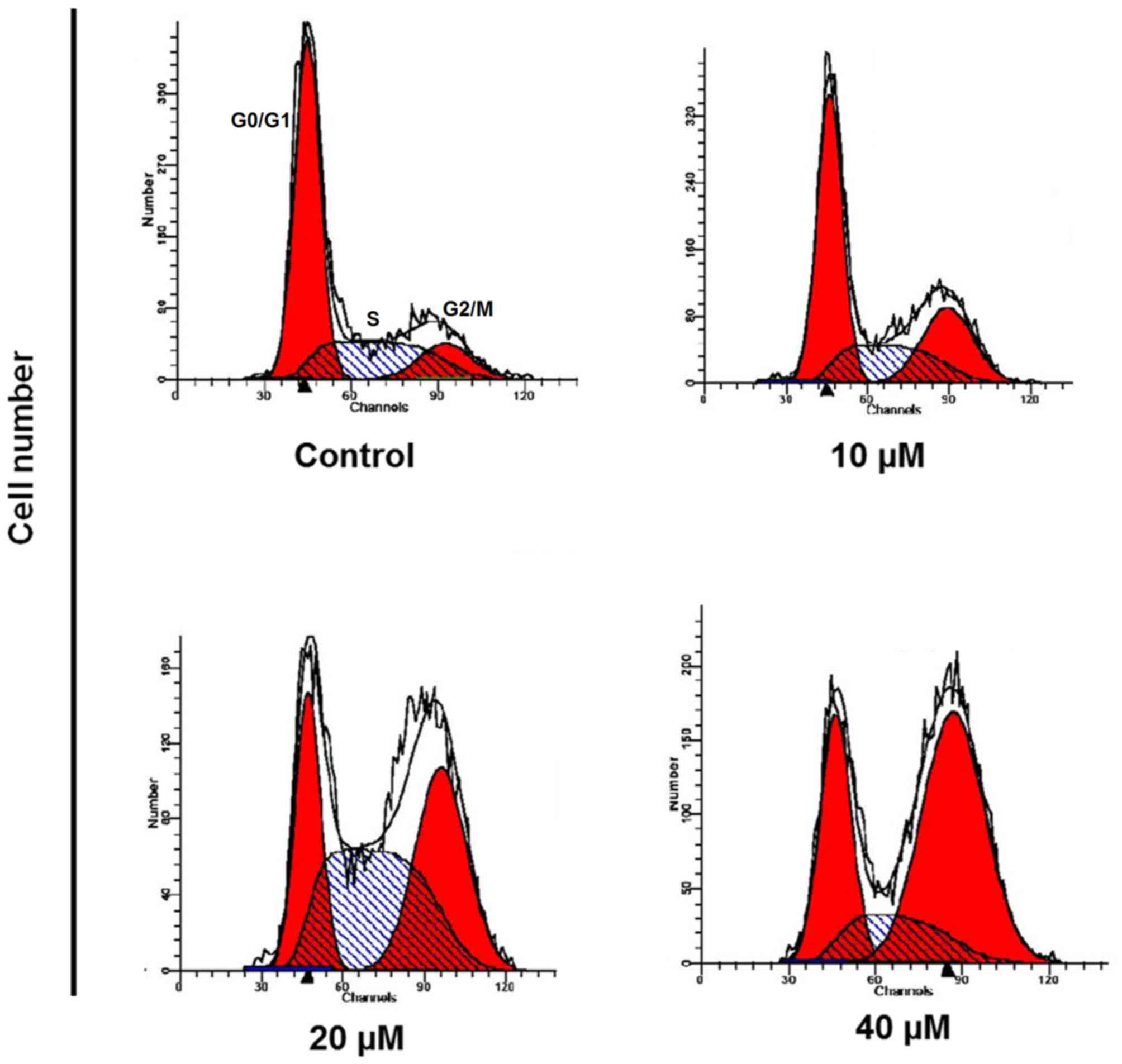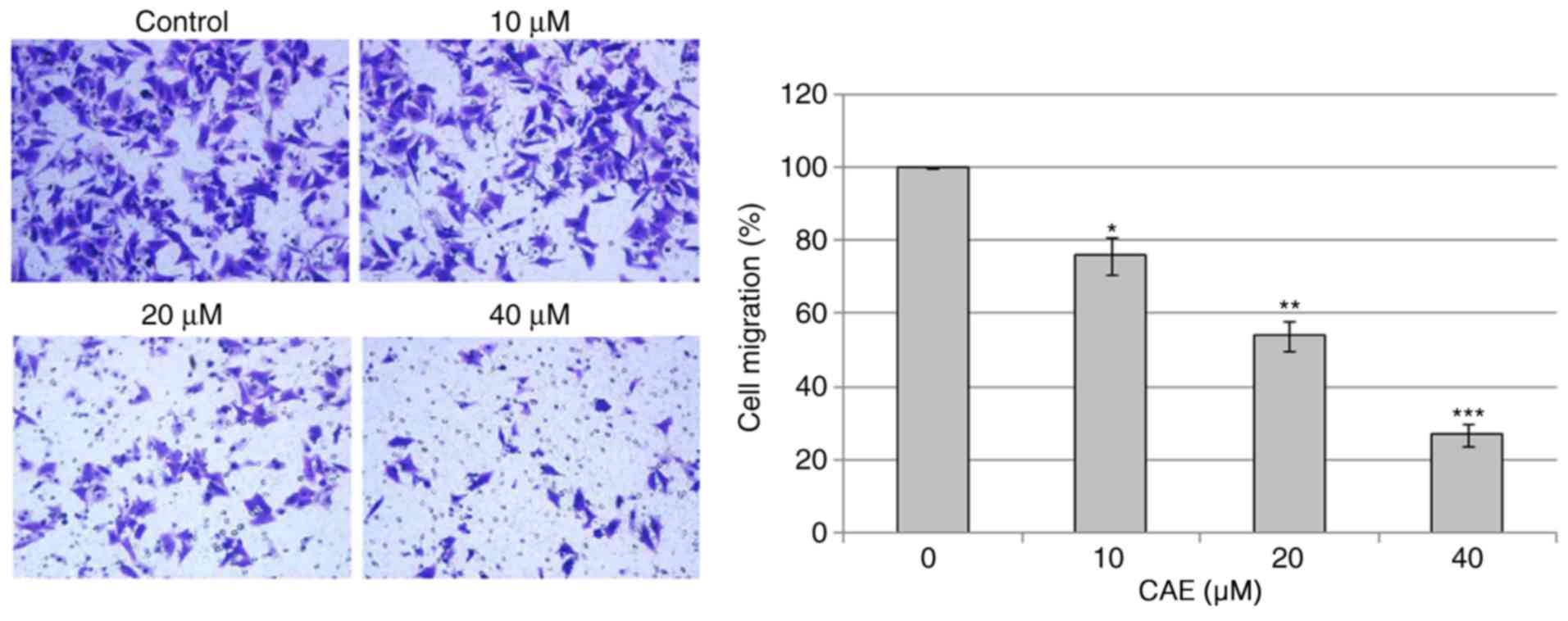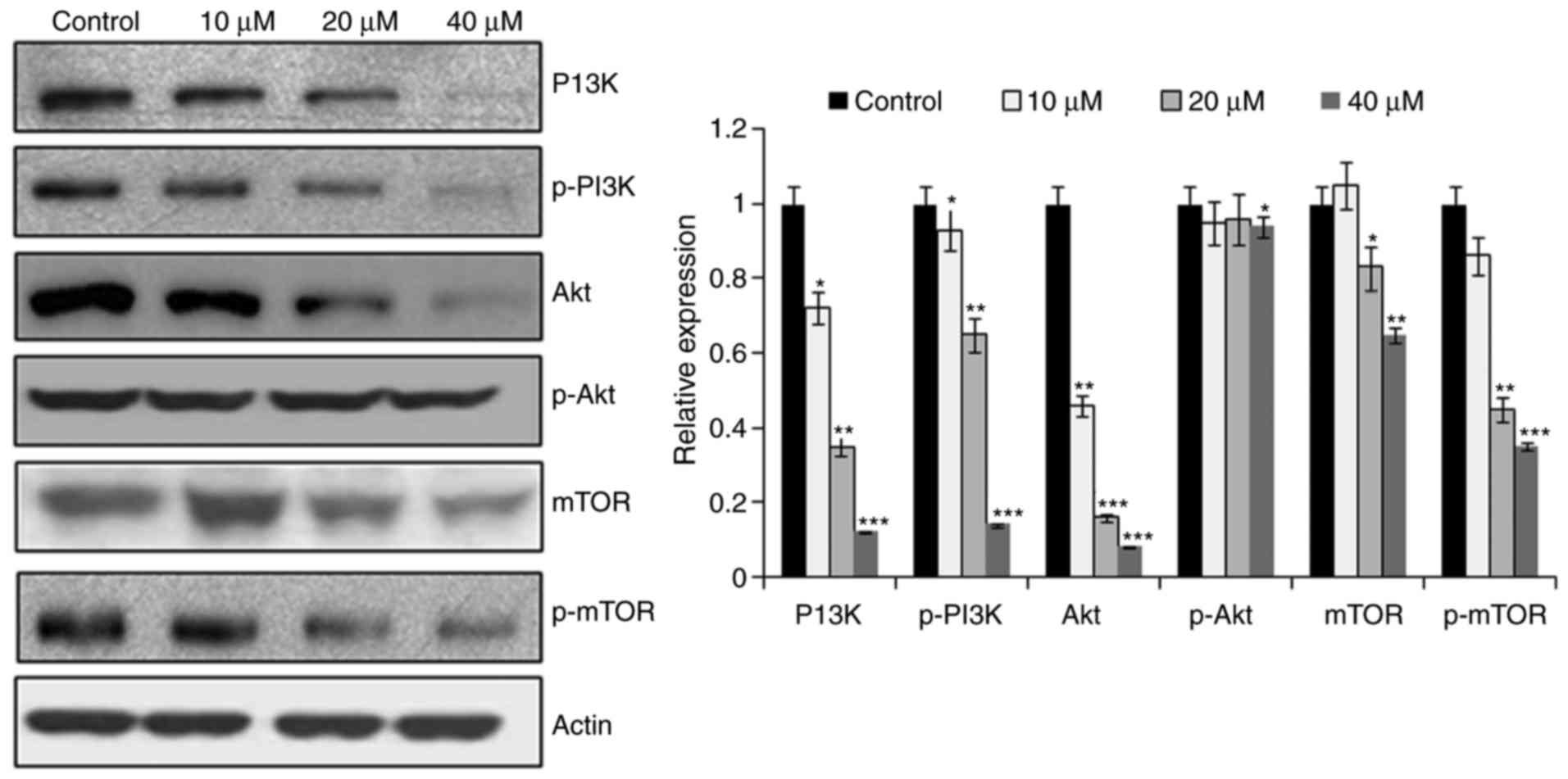Spandidos Publications style
Zeng N, Hongbo T, Xu Y, Wu M and Wu Y: Anticancer activity of caffeic acid n‑butyl ester against A431 skin carcinoma cell line occurs via induction of apoptosis and inhibition of the mTOR/PI3K/AKT signaling pathway Retraction in /10.3892/mmr.2021.12011. Mol Med Rep 17: 5652-5657, 2018.
APA
Zeng, N., Hongbo, T., Xu, Y., Wu, M., & Wu, Y. (2018). Anticancer activity of caffeic acid n‑butyl ester against A431 skin carcinoma cell line occurs via induction of apoptosis and inhibition of the mTOR/PI3K/AKT signaling pathway Retraction in /10.3892/mmr.2021.12011. Molecular Medicine Reports, 17, 5652-5657. https://doi.org/10.3892/mmr.2018.8599
MLA
Zeng, N., Hongbo, T., Xu, Y., Wu, M., Wu, Y."Anticancer activity of caffeic acid n‑butyl ester against A431 skin carcinoma cell line occurs via induction of apoptosis and inhibition of the mTOR/PI3K/AKT signaling pathway Retraction in /10.3892/mmr.2021.12011". Molecular Medicine Reports 17.4 (2018): 5652-5657.
Chicago
Zeng, N., Hongbo, T., Xu, Y., Wu, M., Wu, Y."Anticancer activity of caffeic acid n‑butyl ester against A431 skin carcinoma cell line occurs via induction of apoptosis and inhibition of the mTOR/PI3K/AKT signaling pathway Retraction in /10.3892/mmr.2021.12011". Molecular Medicine Reports 17, no. 4 (2018): 5652-5657. https://doi.org/10.3892/mmr.2018.8599















